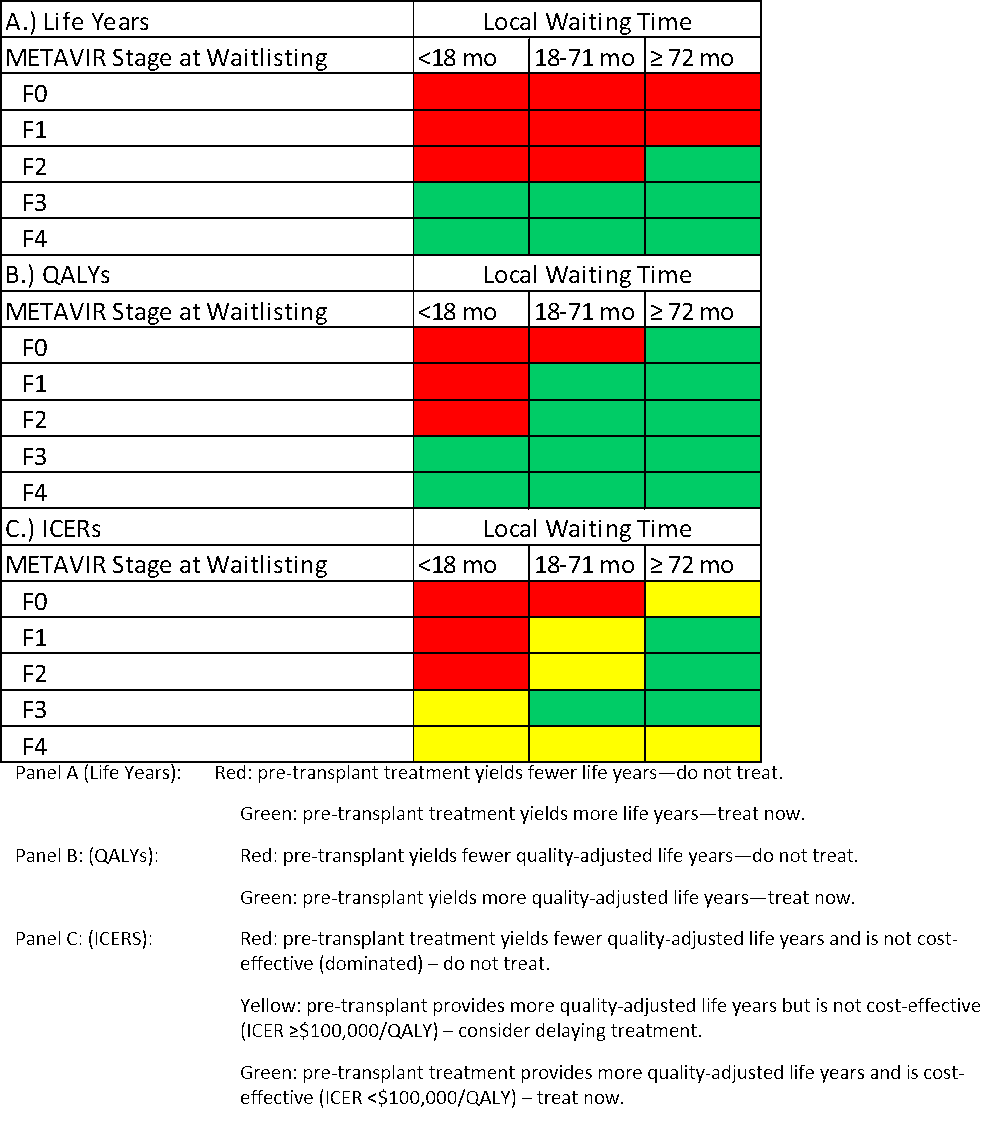Optimal Timing of Hepatitis C Treatment among HIV/HCV Co-Infected End-Stage Renal Disease Patients: Pre vs. Post-Transplant
B. Shelton1, G. Berdahl1, D. Sawinski2, B. Linas3, P. Reese2, M. Mustian1, R. Reed1, P. MacLennan1, J. Locke1
1University of Alabama at Birmingham, Birmingham, AL, 2University of Pennsylvania Perelman School of Medicine, Philadelphia, PA, 3Boston University School of Medicine, Boston, MA
Meeting: 2019 American Transplant Congress
Abstract number: 586
Keywords: Economics, Hepatitis C, HIV virus, Kidney transplantation
Session Information
Session Name: Concurrent Session: Non-Organ Specific: Viral Hepatitis
Session Type: Concurrent Session
Date: Tuesday, June 4, 2019
Session Time: 4:30pm-6:00pm
 Presentation Time: 4:42pm-4:54pm
Presentation Time: 4:42pm-4:54pm
Location: Room 309
*Purpose: End-stage renal disease (ESRD) patients co-infected with HCV and HIV have access to effective treatment options for HCV infection. However, they also have access to HCV-infected kidneys, which historically afford shorter times to transplantation. Given high waitlist mortality and rapid progression of liver fibrosis among co-infected kidney-only transplant candidates identifying the optimal treatment strategy is paramount.
*Methods: Two strategies, treatment pre- and post-transplant, were compared using Monte Carlo microsimulation of 1,000,000 candidates. The microsimulation was stratified by liver fibrosis stage at waitlist addition and wait-time over a lifetime time horizon.
*Results: Treatment post-transplant was consistently cost-saving as compared to treatment pre-transplant due to the high cost of dialysis. Among patients with low fibrosis disease (F0-F1), treatment post-transplant also yielded higher life months (LM) and quality-adjusted life months (QALM) except among F1 candidates with wait-times >18 months. For candidates with advanced liver disease (F2-F4), treatment pre-transplant afforded more LM and QALM unless wait-time was < 18 months. Moreover, treatment pre-transplant was cost-effective for F2 candidates with wait-times > 71 months and F3 candidates with wait-times > 18 months.
*Conclusions: Thus, optimal timing of HCV treatment differs based on liver disease severity and wait-time, favoring pre-transplant treatment when cirrhosis development prior to transplant seems likely.
To cite this abstract in AMA style:
Shelton B, Berdahl G, Sawinski D, Linas B, Reese P, Mustian M, Reed R, MacLennan P, Locke J. Optimal Timing of Hepatitis C Treatment among HIV/HCV Co-Infected End-Stage Renal Disease Patients: Pre vs. Post-Transplant [abstract]. Am J Transplant. 2019; 19 (suppl 3). https://atcmeetingabstracts.com/abstract/optimal-timing-of-hepatitis-c-treatment-among-hiv-hcv-co-infected-end-stage-renal-disease-patients-pre-vs-post-transplant/. Accessed December 14, 2025.« Back to 2019 American Transplant Congress

